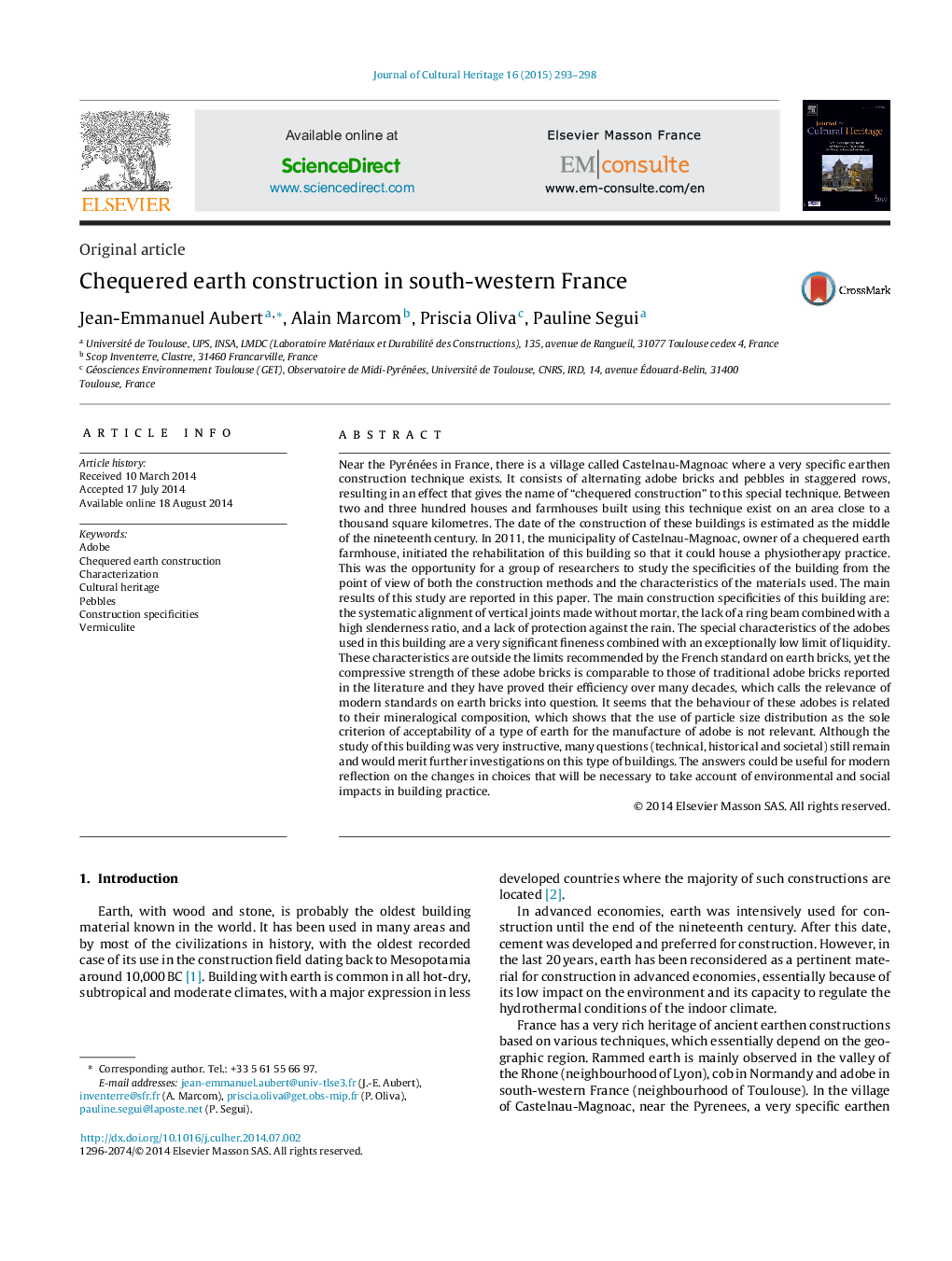| کد مقاله | کد نشریه | سال انتشار | مقاله انگلیسی | نسخه تمام متن |
|---|---|---|---|---|
| 1037942 | 944193 | 2015 | 6 صفحه PDF | دانلود رایگان |
عنوان انگلیسی مقاله ISI
Chequered earth construction in south-western France
ترجمه فارسی عنوان
ساخت زمین چمن زنی در جنوب غربی فرانسه
دانلود مقاله + سفارش ترجمه
دانلود مقاله ISI انگلیسی
رایگان برای ایرانیان
کلمات کلیدی
ادوبی، ساخت زمین چکرز، تعیین مشخصات، میراث فرهنگی، سنگریزه مشخصات ساختاری، ورمیکولیت،
موضوعات مرتبط
مهندسی و علوم پایه
شیمی
شیمی تئوریک و عملی
چکیده انگلیسی
Near the Pyrénées in France, there is a village called Castelnau-Magnoac where a very specific earthen construction technique exists. It consists of alternating adobe bricks and pebbles in staggered rows, resulting in an effect that gives the name of “chequered construction” to this special technique. Between two and three hundred houses and farmhouses built using this technique exist on an area close to a thousand square kilometres. The date of the construction of these buildings is estimated as the middle of the nineteenth century. In 2011, the municipality of Castelnau-Magnoac, owner of a chequered earth farmhouse, initiated the rehabilitation of this building so that it could house a physiotherapy practice. This was the opportunity for a group of researchers to study the specificities of the building from the point of view of both the construction methods and the characteristics of the materials used. The main results of this study are reported in this paper. The main construction specificities of this building are: the systematic alignment of vertical joints made without mortar, the lack of a ring beam combined with a high slenderness ratio, and a lack of protection against the rain. The special characteristics of the adobes used in this building are a very significant fineness combined with an exceptionally low limit of liquidity. These characteristics are outside the limits recommended by the French standard on earth bricks, yet the compressive strength of these adobe bricks is comparable to those of traditional adobe bricks reported in the literature and they have proved their efficiency over many decades, which calls the relevance of modern standards on earth bricks into question. It seems that the behaviour of these adobes is related to their mineralogical composition, which shows that the use of particle size distribution as the sole criterion of acceptability of a type of earth for the manufacture of adobe is not relevant. Although the study of this building was very instructive, many questions (technical, historical and societal) still remain and would merit further investigations on this type of buildings. The answers could be useful for modern reflection on the changes in choices that will be necessary to take account of environmental and social impacts in building practice.
ناشر
Database: Elsevier - ScienceDirect (ساینس دایرکت)
Journal: Journal of Cultural Heritage - Volume 16, Issue 3, MayâJune 2015, Pages 293-298
Journal: Journal of Cultural Heritage - Volume 16, Issue 3, MayâJune 2015, Pages 293-298
نویسندگان
Jean-Emmanuel Aubert, Alain Marcom, Priscia Oliva, Pauline Segui,
